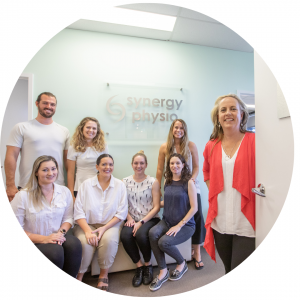Pain after a yoga class?
We all head to a yoga in the hope of improving our health, our mobility and also providing ourselves with important sense of calm and relaxation. However, recent research has pointed an increase in the frequency of yoga related injuries. So what can we do to avoid this and what are the most common injuries a physiotherapy treats after yoga.
1.Hamstring tendon strains
Yoga classes have plenty of forward bends and hamstring stretches. If your hamstring tendon has signs of weakness, stretching this tendon can overload it contributing to hamstring tendinopathy. This can create pain felt directly on the sitting bone, especially after yoga class or with sitting on hard surfaces. So if you have pain on the sitting bone, that it is best you avoid prolonged forward bend postures and modify your yoga practice to include more back bends and twists while your hamstring tendon recovers. Long into this free resource here to understand how to care for your hamstring tendons during your yoga class.
2. Outer hip pain and bursitis
If you are new to yoga, female and over 40, you have an increased chance of developing tendon related problems in the outer hip and buttock region called gluteal tendinopathy (sometimes also known as bursitis). Over stretching can contribute to weakness through the gluteal tendon and contribute to pain on the outer hip, especially when you are lying on your side or after periods of prolonged walking or sitting crossed legged. To avoid this, you will need to stop deep buttock stretches for a period of time to allow the tendon to recover. This means avoiding pigeon pose temporarily as well as avoiding poses that take the knee or ankle towards the opposite shoulder. Strengthening the gluteal muscle and tendon can help in its recovery. Log into this free video here to learn what to do with outer hip pain during your yoga practice.
3. Knee pain
Loss of flexibility in the hips and excessive twisting of the knee can contribute to knee joint pain and pain to the meniscus (which is cushioning cartilage that lines the knee joint). Knees do not like twisting! To prevent this, ensure you do not have any joint pain throughout your class and if you feel a twisting stretch in your knee, then you need to change positions. Ensure you have adequate hip mobility or use props, such as bolsters or belts to assist you in your stretch without damaging the knee. Like to know more? Watch this short video here
4. Shoulder pain
It is very common to develop shoulder pain, especially if there is a large number of down dogs or Vasisthasana (side planks). The delicate rotator cuff tendons and bursa are designed to hold the ball stable within the socket. However, these can easily be strained in overhead or loaded positions. In downward dog, protect the shoulder by ensuring you do not overextend and keep the arm bone spiralling outwards to protect the underlying bursa. Ensure you have strong shoulder blade and scapular muscles to support the shoulder joint and if you do have any shoulder pain, avoiding side plank postures temporarily can allow your tendons to recover. Watch this short video here
There are many reasons for the development and onset of pain and it is always advisable to seek individual assessment from a physiotherapist who has a good understanding of yoga practice.
In the meantime, some key tips in your class to help prevent injury, would include:
- Listen to the breath – If you are holding your breath or struggling to breath, you may be pushing too hard or too far into postures. Back off, slow down and breathe.
- Alignment – your teacher will often have great cues to assist in optimising your alignment to prevent injury and make sure you listen to your teacher’s instructions and practicing with mirrors can also help to see where you are compromising your alignment. Relax and let go of the ego. Everybody in class is different with their own set of injuries or joint shapes. You should not really be attempting to be where your neighbour or your teacher is throughout your sequence of postures, but simply use this class time to close your eyes and listen to your own body and turning inward. Comparing yourself to your neighbours or your teachers can result in pushing too hard and straining important ligaments or tendon insertions.

Here at Synergy Physio we love helping you with your health. We offer expertise in women’s health, spinal, hip and pelvic pain as well as yoga related injuries.
Explore more about our team and how we can help you here!
Contact us today on 07 5448 3369 or simply book online

Leave A Comment